What are the distress signals your body will give before a cerebral hemorrhage?
Thanks. The body's distress signals before a cerebral hemorrhage.
I. Face twitching and crooked to one side.
Second, hand tremors. When I had a cerebral hemorrhage, I was sitting in the office, and at that time, I was still smoking, and I just lit a cigarette, but the cigarette fell off the table and burned a hole in it, and I immediately asked my colleagues to send me to the hospital for treatment.
I had a cerebral hemorrhage caused by high blood pressure. Thanks to the timely transportation to the hospital and the proper treatment, I started rehabilitation after one month and was able to walk and take care of myself after three months.
Third, this disease is very important to insist on exercise. After I came back from the hospital, I insisted on walking more than 10,000 steps a day, and I feel that my condition has improved significantly. Of course, exercise or not and what method to use also varies from person to person.
Fourth, in addition to adhere to the physical exercise, should eat as much fruit and vegetables, light diet, less oil, less salt, less sugar.
There are exceptions to everything, they say that drinking is easy to get high blood pressure disease, but I never drink, the doctor said I smoked too much caused by high blood pressure. Old mother ninety-eight this year, she has no sugar, every time she goes home she remembers, put her to buy packets of brown sugar or white sugar back. She drinks porridge three times a day, but all use sugar as a condiment.
This is just a little bit of my own experience of being sick and recovering from exercise and life.



The third image is from the web, the
I saved one and am now recovering as normal.
One, a crooked mouth, drooling, and slurred speech.
Second, the hand lever can't be lifted (the right brain blocks the left hand lever inconveniently, the left brain blocks the right hand inconveniently)
Third, when you find out, take your medication quickly.
Four, call the 120 emergency number and take it to the hospital.
Five, get your money ready and pay first to save your life.
What are the signs that precede the onset of a cerebral hemorrhage?
1. Cerebral stasisBefore the onset of some patients on the nails, the appearance of red and black spots, indicating that the body of the blood flow problems, which is a precursor to cerebral hemorrhage.
2. Sudden numbness and weakness on one side of the body, impaired mobility, hand weakness, mouth crooked salivation, walking without center of gravity.
3. Sudden stiffness of mouth and tongue, slurring of words, or dullness of brain when talking to others.
4. Temporary blurring of vision, which may later return to normal on its own in mild cases or lead to blindness in severe cases.
5. Dizziness, eye rotation, unsteadiness or even fainting.
When any of these symptoms occur, it is highly important to seek medical attention immediately.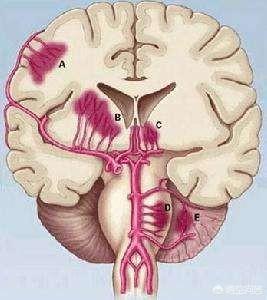 。
。
More content please pay attention to the farmland circle micro letter public number: quandier, 300,000 new farmers gathered active community
oriental flowers and snow
A cerebral hemorrhage is when blood flows inside a blood vessel into the brain.
The onset of the disease is usually very critical, is one of the most terrible emergency, rescue time is often calculated in minutes and seconds, the slightest delay, may make the end of the big change, and even pay the price of life.
Usually before a cerebral hemorrhage comes, the body will show abnormal signs:
1, Sudden headache
Normally healthy people suddenly appear severe headache, long-term chronic headache suddenly aggravated, if accompanied by nausea and vomiting, you should be more vigilant.
2, Sudden weakness and numbness of the limbs
Normally mobile people suddenly feel numbness and impaired movement of one limb, need to be alert to the possibility of cerebral hemorrhage.
3, Sudden blurred vision
Sudden blurring of vision without a cause, and in some cases, swelling and pain in the eyes, may alert you to the possibility of a cerebral hemorrhage.
4, Sudden nosebleed
Weather cannot be ruled out, but if a sudden nosebleed does not stop, you need to be alert to the possibility of a cerebral hemorrhage.
5, Sudden drowsiness, fatigue
When your energetic self suddenly feels tired, drained, and wanting to sleep, you need to be on the lookout for a cerebral hemorrhage.
6, Sudden dizziness
Suddenly feel the sky spinning, unable to stand normally and smoothly, need to be alert to the appearance of cerebral hemorrhage.
7. Sudden slurred speech
When you are sleeping, suddenly drooling from the crooked corners of your mouth, your usual speech becomes unclear and your ability to express yourself decreases, you need to be alert to the appearance of cerebral hemorrhage.
I hope my answer helps you!
If there's anything you don't understand, comment and private message me!
40-year-old Ms. Sun died because of a cerebral hemorrhage, Ms. Sun's life is not as good as it should be, the only comfort is that there is a husband who is always with him at all times. 20 years old or so when I met my current husband, rubbing guns and pregnant with a child, but at that time it was not yet the age of marriage, thinking that the child will be born first to the age of the certificate, but at that time, family planning to catch the tighter, the child 8 months of the time, was reported to force the child to abortion. time, was reported, forced to abort the child, due to the month of overflow of the child, injury to the body, after marriage has not been able to have a child, in order to have a child ate a lot of pain, with a lot of law, originally slim figure has become rounded.

When she was 22 years old, her father had a cerebral infarction and recovered poorly after being discharged from the hospital, she needed to rely on crutches to walk and her life was limited, at 27 years old her father had another cerebral infarction and couldn't be rescued, at 30 years old she was diagnosed with high blood pressure and a mild cerebral hemorrhage, fortunately her husband was unfailingly loyal to her and resolutely refused to let her try to have a child, saying that children are destined to come to life and that if she didn't have any, she should not have any, and that she would be quite well off with her own two children, and that she should not have any. Luckily later adopted a girl, husband and wife harmony, life has been a good life, the child is also well-behaved, more fortunate, 5 years later, Ms. Sun found herself pregnant, her husband resolutely do not want to worry about her health, but she felt that this is a gift given to them by God, she must be followed, so careful to give birth to the child, it is a girl, and all are happy. When the child was 2 years old, brain hemorrhage into the hospital, well not very serious, stayed in the hospital for a few days to go home, but did not expect to 40 years old when the brain hemorrhage again, this time there is no previous lucky, after surgery, ICU stayed a week without any improvement, and ultimately the family to give up the treatment.
At the onset of a cerebral hemorrhage, the following 3 symptoms are usually present:
1. Headache
Headache is the most common and obvious symptom of patients with cerebral hemorrhage, when the patient has a cerebral hemorrhage, the blood will stimulate the meninges and the pain nerves in the brain, more than 80% of the people will experience severe and unbearable pain, of course, there are also some people who do not have obvious symptoms of pain, the pain begins to appear in the symptomatic side, and with the rise of the intracranial pressure and the flow of blood, the whole head will experience headache Sensation.

2. Vomiting
Another common symptom of cerebral hemorrhage is vomiting, more than 80% of patients have this symptom, the vomiting is very serious, showing jet, when cerebral hemorrhage occurs, the intracranial pressure will rise, the vomiting will become very serious, some very serious patients, and even the symptom of the vomit is coffee-colored, the person may be a symptom of the gastrointestinal tract bleeding, and need to seek medical attention immediately.
3. Impaired consciousness
The vast majority of patients with cerebral hemorrhage experience either severe or mild impairment of consciousness, with only a small percentage of patients remaining conscious, and some experiencing severe impairment of consciousness or even coma.
I am Pharmacist Wang, insisting on spreading knowledge of diseases in simple and easy-to-understand words, and dedicating my own small contribution to a healthy China. If you think my answer is helpful to you, please leave a like! In addition, if you still have related questions, welcome to leave a message, we discuss together!
What the common people call cerebral hemorrhage generally refers to spontaneous cerebral hemorrhage, spontaneous hemorrhage of the brain parenchyma without the involvement of traumatic injury, accounting for about twenty to thirty percent of acute cerebral vascular accidents, with high rates of death and disability, and it is the cerebral vascular lesion with the highest mortality rate among the acute stroke lesions, and about eighty percent of cerebral hemorrhage occurs in the cerebral hemispheres, with the remaining twenty percent occurring in the cerebellum and brainstem.
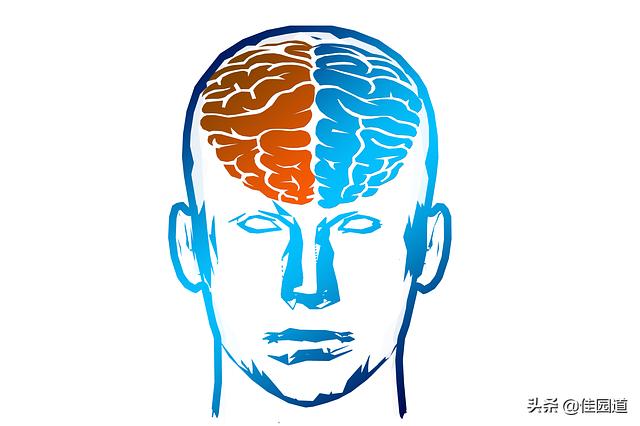
The most common cause of spontaneous cerebral hemorrhage is high blood pressure, which is most familiar to our friends. Other causes of cerebral hemorrhage include blood system diseases, cerebral hemorrhage after cerebral infarction, intracranial tumors destroying blood vessels, cerebral hemorrhage caused by thrombolytic therapy or anticoagulation, and cerebral arteriovenous malformation.
Cerebral hemorrhage occurs mostly in patients over 50 years of age, and when asked about their medical history, most have a history of hypertension.
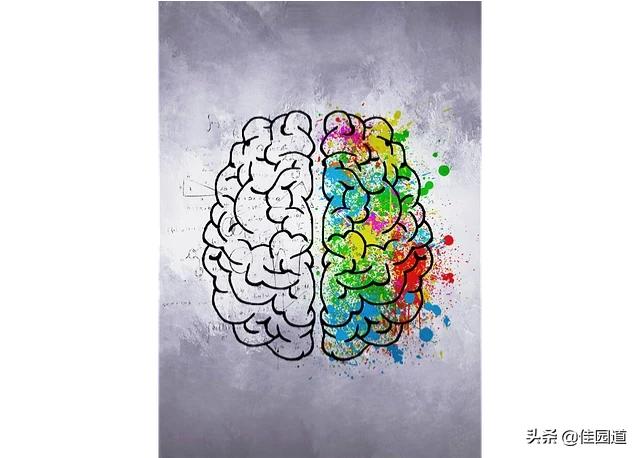
The majority of patients with cerebral hemorrhage have a sudden onset of the disease when they are emotionally excited, engaged in labor or activities, but of course a small number of patients with cerebral hemorrhage have a sudden onset of the disease when they are resting, sleeping, and in a quiet state.
The majority of patients with cerebral hemorrhage do not have precursor signals, and a small number of patients may experience dizziness, blurred vision, headache, and lack of strength in one side of the limb.
Signs that can be given off after the onset of a cerebral hemorrhage, that is, the clinical signs of a cerebral hemorrhage include.
1. Dizziness, blurred vision, headache, slurred speech, tongue out of order, frequent nausea and vomiting, and aphasia in serious patients. One side of the cerebral hemorrhage has drooping eyelids, hemianopsia or double vision, the corner of the mouth is tilted to the side of the cerebral hemorrhage, and the opposite side of the limbs of the cerebral hemorrhage has no strength or can not follow the command, and cannot be moved, that is, it shows typical hemiplegia (paralysis of one side of the limbs).
2、When the amount of cerebral hemorrhage is relatively small, the patient's consciousness is clear, when the bleeding volume is relatively large, the patient manifests as a sudden collapse, that is to say, without any sign of sudden collapse on the ground without any response. Some patients gradually become unconscious with the increase of bleeding.
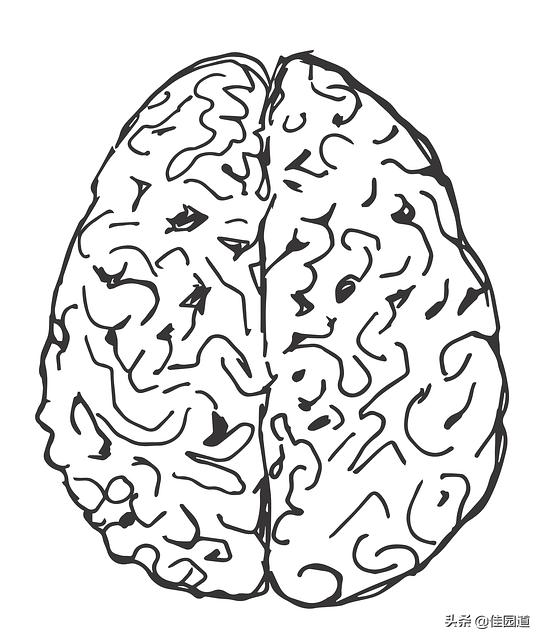
3. There is a marked increase in blood pressure, and one or both pupils appear to be dilated.
When one or more of these manifestations occurs and the patient is usually combined with high blood pressure, we should highly suspect that a cerebral hemorrhage has occurred, and promptly call the emergency number.
(This content is for informational purposes only.)
I am Cai Pu, deputy chief physician of neurosurgery at Chongqing Sanbo Jiangling Hospital, welcome to follow me for more health knowledge.
With the improvement of living standards in recent years, more and more people are experiencing cerebral hemorrhage, which has a very high fatality rate. Understanding the symptoms that may appear before cerebral hemorrhage can be effective in recognizing it as early as possible and seeking timely medical treatment.
The majority of pre-cerebral hemorrhages are asymptomatic, while a few may have symptoms such as dizziness, headache, and limb weakness, which peak within minutes or hours of onset, with the severity of symptoms depending on the amount and location of the bleed.
The main symptoms after the onset of the disease are:
1. Sudden vertigo and severe headache
2. Drowsiness and fatigue
3. Increased blood pressure, nausea and vomiting
4. Slurred speech, numbness and hemiplegia of the limbs
5. Crooked mouth and eyes, blurred vision
Some people may experience choking, difficulty swallowing, and tinnitus.
Patients who are potentially at risk need to be aware of this in their daily lives:
1. Regular inspection
For example, patients with hypertension, atherosclerosis and other diseases must control their blood pressure and lower their blood lipids and cholesterol.
2. Stabilize emotions and keep optimism and spirits happy.
3. Reasonable diets, diversified diets, and reasonable combinations.
4. Combine work and rest
5. Walk and exercise more
I hope the above answer is helpful.
Hello, I am a medical worker Zhang, a practicing physician, can popularize health knowledge for everyone, if you know more, pay attention to me!
Bleeding from ruptured blood vessels in the brain parenchyma is called cerebral hemorrhage, also known as cerebral hemorrhage. Excluding traumatic cerebral hemorrhage, it occurs more often in middle-aged and older people, and more often in men than in women. The common cause of cerebral hemorrhage is high blood pressure. Some data show that more than 80% of patients with cerebral hemorrhage have a history of high blood pressure. As a result of long-term high blood pressure, small arteries in the brain form corn-like sized aneurysms dilated, and under the action of certain factors, when the blood pressure suddenly rises, it will make the tiny aneurysms rupture and cerebral hemorrhage occurs. Long-term high blood pressure, can also make the brain small artery lining damage, lipid deposition, hyaline-like change, wall brittleness enhancement, more prone to rupture bleeding. In addition, cerebral arteriosclerosis, cerebrovascular malformation is also a common cause of cerebral hemorrhage. All the factors that can make the blood pressure rise suddenly, such as emotional excitement, strenuous activities, excessive alcohol consumption, ambulance exertion, etc., are the triggering factors of cerebral hemorrhage. Cerebral hemorrhage can occur in any part of the brain parenchyma and can be single or multiple. However, most of the hypertensive and cerebral arteriosclerotic cerebral hemorrhage is single. The preferred sites are the internal capsule and basal ganglia, followed by the external capsule and frontal lobe. The brainstem and cerebellum are less common.
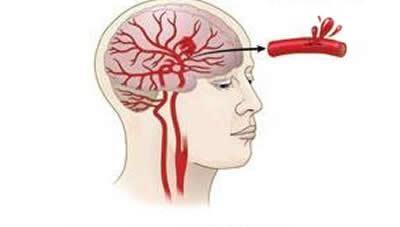
What are the symptoms of a brain hemorrhage?
The onset of cerebral hemorrhage is relatively sudden and the course of the disease progresses rapidly and, in severe cases, worsens within minutes or hours. Patients experience impaired consciousness, hemiparesis, vomiting and incontinence. Headache and elevated blood pressure may also be present.
The clinical manifestations of cerebral hemorrhage can be broadly divided into two types: (1) Whole-brain symptoms, which are mostly caused by cerebral hemorrhage, edema and increased intracranial pressure. They include headache, vomiting, drowsiness and coma. (2) Focal symptoms, which are localized symptoms caused by blood breaking into the brain parenchyma, such as central hemiparesis, facial paralysis, aphasia and hemiplegia.
The clinical prognosis is different due to the different amount and location of bleeding. If the bleeding volume is large, the bleeding spreads to the ventricle of the brain and forms brain hernia, or when it is complicated with centralized hyperthermia or stress gastrointestinal bleeding, the consequences are serious and the mortality rate is high. Therefore, it is necessary to pay great attention to the above situations and actively carry out rescue treatment in order to reduce the morbidity, mortality and disability rate.
What are the precursors to a brain hemorrhage
Relevant data show that after the elderly nosebleed, about 50%~80% of them will have brain hemorrhage within 1~6 months. Therefore, after excluding trauma, inflammation and other factors, most of the elderly nosebleeds are one of the early signals of brain hemorrhage.
1. Suddenly feel one side of the body numbness, weakness, activity inconvenience, hand-held objects fall, mouth crooked, salivation, walking unsteadily.
2. Suddenly unable to speak when talking to others, or slurring words, or not understanding what others say.
3. Temporary blurred vision, which may later return to normal on its own, or blindness.
4. Sudden dizziness, rotation of the surrounding scenery, unsteadiness or even fainting. These manifestations can occur briefly once, or they can recur or get progressively worse.
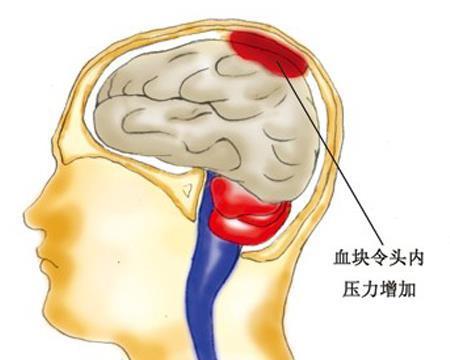
How to prevent brain hemorrhage?
1, life should be regular The elderly can properly do some labor within their capabilities, but not too strenuous.
2、Control of high blood pressure To control blood pressure ideally, attention must be paid to many aspects.
3, maintain a good state of mind to maintain optimism, avoid over-excitement. Do calm, reduce the worry, sadness and happiness do not over, indifferent to fame and fortune, contentment.
4, pay attention to diet Diet should pay attention to low fat, low salt, low sugar. Eat less animal brain, offal, eat more vegetables, fruits, soy products, with appropriate amount of lean meat, fish, eggs.
5, prevent constipation stool dry knot, defecation force, not only the abdominal pressure rises, blood pressure and intracranial pressure also rises at the same time, it is very easy to make the fragile small blood vessel rupture and trigger cerebral hemorrhage. To prevent constipation, eat more fiber-rich foods, such as green vegetables, celery, leeks and fruits.
6, to prevent exertion Physical and mental labor should not be too tired, overload work can induce cerebral hemorrhage.
7, pay attention to weather changes Cold weather is a good season for stroke, blood vessel contraction, blood pressure is easy to rise, pay attention to warmth, so that the body to adapt to climate change. According to your health condition, you should do some suitable physical exercise, such as walking, doing radio gymnastics, etc., to promote the health of your body. According to your health condition, you should also do some suitable physical exercise, such as walking, doing radio gymnastics, etc., in order to promote blood circulation.
8, often move the left hand in daily life, as much as possible with the left upper limb and the left lower limb, especially with the left hand, can reduce the burden of the left hemisphere of the brain, but also can exercise the right hemisphere of the brain to strengthen the right hemisphere of the brain coordination function. Medical research shows that cerebral hemorrhage is most likely to occur in the right hemisphere of the brain where blood vessels are more fragile, so the best way to prevent cerebral hemorrhage is to use the left hand to rotate two fitness balls in the morning and evening to help the right hemisphere of the brain to develop.
9, pay close attention to their own body changes Stroke will have some aura symptoms, such as no cause of severe headache, dizziness, fainting, some sudden numbness of the limbs, fatigue or momentary loss of vision, language communication difficulties, etc., should be timely medical examination and treatment.
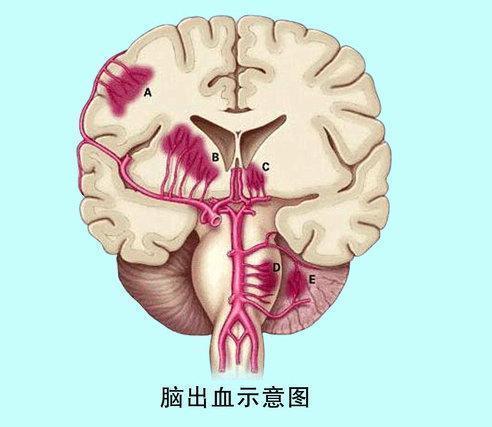
Conclusion: Early detection and timely treatment are essential. Regular checkups should be done and measures should be taken to take medication to lower or stabilize blood pressure and prevent it from increasing suddenly. Atherosclerosis is detected and must be treated early to lower blood lipids and cholesterol in order to maintain the elasticity of blood vessels. Spirit must be optimistic. Avoid mental tension and fatigue to prevent arteriosclerosis and increase in blood pressure. Pay attention to the combination of work and rest, reasonable arrangement of work, ensure enough sleep, and avoid overwork and over-tiredness.
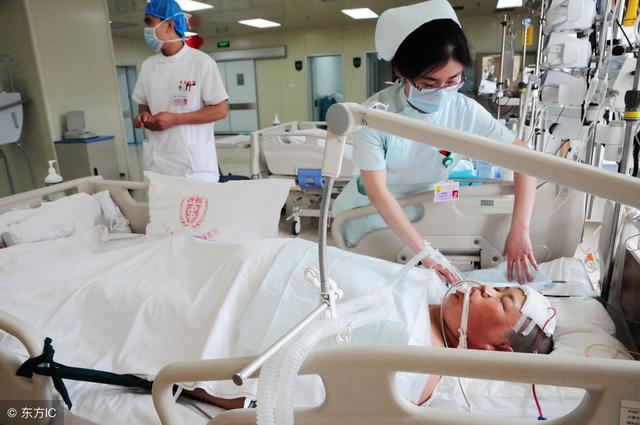
Cerebral hemorrhage, a hemorrhage within the brain parenchyma, needs to be excluded from traumatic causes and is often due to hypertension combined with atherosclerosis. Because the arterial wall in the brain is relatively weak, the middle layer of muscle cells and the outer membrane connective tissue content is small, and there is no outer elastic layer. When the wall of the blood vessel is diseased, the elasticity of the wall is weakened, and a sudden rise in blood pressure is most likely to cause the wall to rupture and lead to intracerebral hemorrhage.
If the patient is over 50 years old, has a history of high blood pressure, smoking and drinking, and is in the middle of an activity or in an emotional situation before the onset of the disease, and then suddenly develops a headache, dizziness, blurred vision, numbness of the limbs, lack of strength in the arms and legs, slurred speech, and even coma, then the first thing to consider is cerebral infarction or cerebral hemorrhage, and the most sensitive examination for early cerebral hemorrhage is cranial CT. Then the first thing to consider is cerebral infarction or cerebral hemorrhage, and the most sensitive examination for early cerebral hemorrhage is cranial CT, which needs to be improved in time to make a clear diagnosis, so as to deal with it in time and reduce its fatality rate and disability rate.
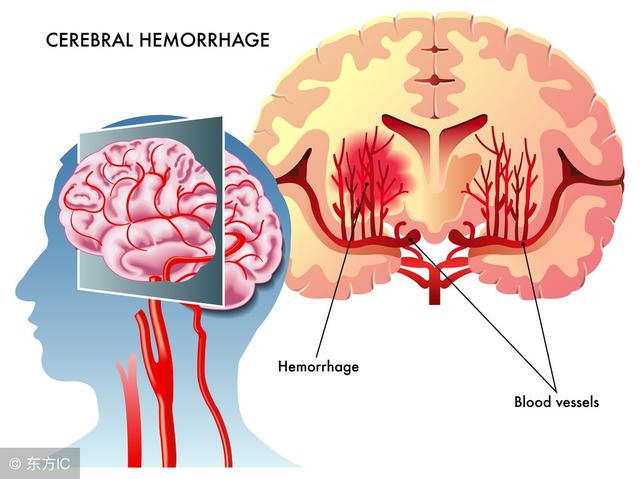
Risk factors for cerebral hemorrhage include age, history of hypertension, poor lifestyle habits, strenuous activities, emotional excitement, etc. It is rare for the disease to start in quietness, with dizziness, headache, and limb weakness as the precursor symptoms. When there is a significant increase in blood pressure, it can reach the peak within a few minutes, with severe headache, vomiting, limb weakness or accompanied by hemiplegia, impaired consciousness and other symptoms. Signs of meningeal irritation may appear, and in severe cases, symptoms of epileptic seizure such as rigidity of limbs, squinting of eyes, and shortness of breath may appear. The severity of the disease depends on the amount and location of bleeding in the brain parenchyma.
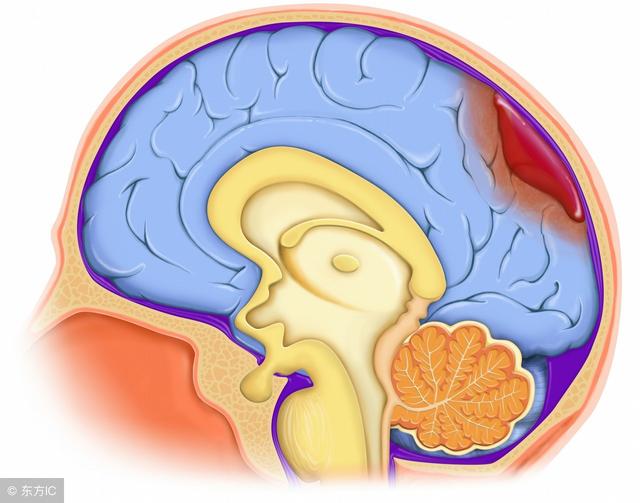
The parts of the body and their symptoms are: hemorrhage of the chiasmatic nucleus, mostly manifested by unfavorable movement of the limb on the opposite side of the lesion, sensory impairment and isotropic hemianopsia; hemorrhage of the thalamus, which may be accompanied by paralysis of the limb on the opposite side, sensory impairment, nociceptive sensitivity, and mental disorders, including affective indifference, hallucinations, slow slurred speech, and repetitive speech, etc.; hemorrhage of the head of the caudate nucleus, which may be accompanied by headache, vomiting, and central facial paralysis of the contralateral side; hemorrhage of the cerebellum, which is often manifested by Cerebellar hemorrhage, often manifested as unsteady standing, walking to one side, unfavorable speech, dysarthria, poetic language, irregular respiratory rhythm, or even enter coma quickly; ventricular hemorrhage, headache, vomiting, or even upper gastrointestinal hemorrhage, high fever, profuse sweating, and so on.
The most typical symptoms of cerebral hemorrhage are headache, vomiting, unfavorable limb movement, slurred speech, unsteady walking and numbness of limbs. Especially those who have a history of high blood pressure and poor lifestyle habits should pay attention to the above symptoms and consult the doctor in time to gain a head start in the diagnosis and treatment of cerebral hemorrhage.
Respondent: Xiaoxiao Huo, M.D.
Welcome to Life Calling for more useful health knowledge.
1、Suddenly appear sleepy, snoring loudly, the patient can not wake up, for itself has high blood pressure or obesity patients occur in this case, should think of the possibility of cerebral hemorrhage; 2、Appearance of crooked corners of the mouth, salivation, articulate expression is not clear, expression of things or expression of the thinking of the wrong, can also think of the possibility of cerebral hemorrhage; 3、There may be a severe headache or dizziness, walking unsteadily, a sudden fall should be Think of the possibility of cerebral hemorrhage; 4, for themselves have high blood pressure or diabetes, obese elderly or middle-aged patients, if there is a sudden impaired consciousness, suddenly appeared the vision is not clear or spitting out words, or appear activity disorder and so on, should think of the possibility of cerebral hemorrhage. The patient should be sent to the hospital in time to receive a CT examination to clarify the presence of the disease.
This question and answer are from the site users, does not represent the position of the site, such as infringement, please contact the administrator to delete.